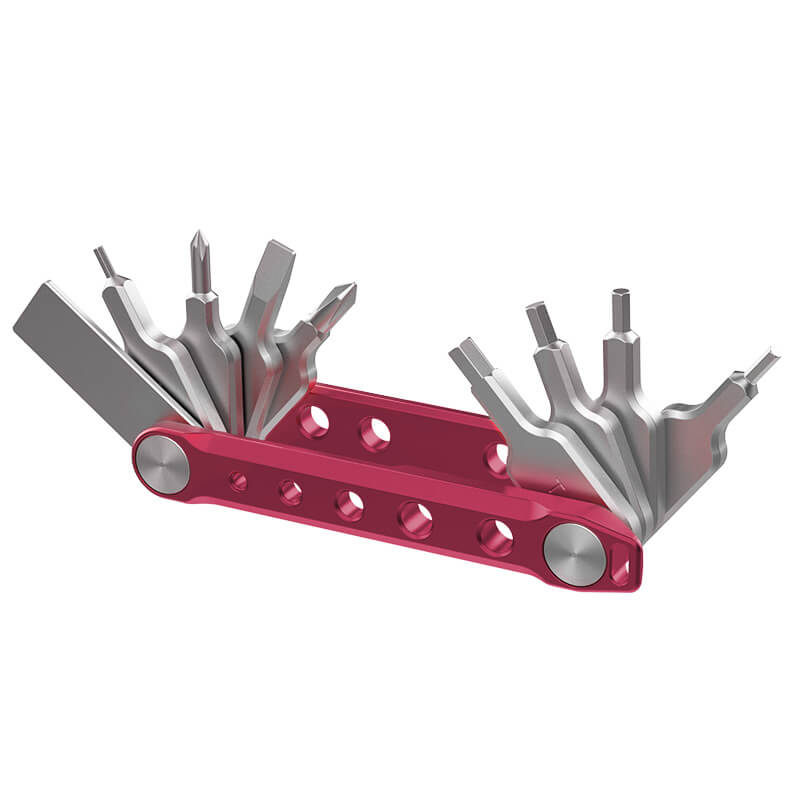Choosing the right tripod can dramatically improve your photography or videography experience, but with so many options available, it can be difficult to know where to start. In this article, we'll cover what beginners should look for in their first tripod and then move on to specific recommendations for different types of users: from those who need something lightweight for travel, to those who need a stable tripod for studio work, to videographers who require fluid motion, and more. Whether you're shooting landscapes or close-ups of small objects, capturing the night sky, or filming content with your smartphone, you'll find suggestions to suit your needs.

Important considerations when choosing a tripod
- Maximum load capacity: Make sure the tripod can support the weight of your camera and lens.
- Weight of the tripod: A lighter tripod is easier to carry, especially when traveling.
- Durability of the material: Carbon fiber is light and strong, while aluminum is heavier but also robust.
- Stability: Make sure the construction is sturdy and doesn't wobble or shake.
- Altitude range: The tripod should be at your eye level so you can use it comfortably, but it should also be low enough to allow for different perspectives.
- Leg closures: High-quality fasteners prevent slipping and allow quick height adjustment.
- Adjustability and versatility: Look for tripods with adjustable leg angles for shooting on uneven surfaces.
- Head type: Choose between ball heads for flexibility and pan/tilt heads for precision.
- Quick release system: This feature allows you to quickly attach and remove your camera.
- Portability: Make sure that the tripod is compact enough for easy transport when folded.
- Feet: Make sure they are suitable for your typical recording environment; some have rubber or spiked bases.
- Center column: Should it be geared for precise movements or not geared for speed?
- User-friendliness: Make sure it's easy to set up and use, which is especially important for beginners.
- Accessory compatibility: Check if you can attach additional equipment such as arms for monitors or microphones.
For beginners: Easy-to-use, versatile and affordable tripods
For beginners, a tripod should be easy to use, versatile for different shooting situations, and affordable. When you're first starting out, you might not know exactly what you want from a tripod. That's why it's important to find one that will allow you to grow as a photographer or videographer. Look for tripods that are height-adjustable and lightweight and easy to transport. They should be easy to set up and stable enough to hold your camera securely. You don't have to spend a lot of money, but make sure the tripod isn't too wobbly—it should feel secure when you use it. A good entry-level tripod will ease your transition into photography and videography and help you take clearer, sharper images right from the start.

Lightweight and compact tripods for the travel enthusiast
If you love to travel and want to take great photos while you travel, you need a tripod that's light enough to carry around all day and compact enough to fit in your bag. Your travel tripod should be quick to set up, as you don't want to miss a shot while fiddling with it. It's also important that it extends to a convenient height so you can comfortably shoot without having to bend down. Make sure the tripod has sturdy legs that will stay firmly in place even on uneven ground. A good travel tripod will help you take clear, stable photos anywhere without weighing you down.

Heavy-duty and versatile tripods for studio photographers
Studio photographers need a durable tripod that can safely support the weight of large cameras and heavy lenses. The ideal studio tripod is a powerhouse, capable of supporting various pieces of equipment you'll use throughout your career, including heavy lighting rigs and bulky large-format cameras. But strength isn't the only factor; versatility is equally important. You need a tripod with good adjustability so you can try a variety of angles and heights to capture the perfect shot.
Look for a durable tripod that remains stable from its lowest to its highest extension. A model with a removable center column or additional arms can be particularly advantageous, offering the flexibility to shoot overhead or adjust the height and angle without compromising stability. The combination of strength and adaptability of the right studio tripod allows you to unleash your creativity and focus on creating exceptional images instead of struggling with inadequate equipment.

For the videographer: Tripods with fluid heads and steady shots
Videographers need a tripod that allows smooth movements to capture perfect panning shots. A fluid head tripod is essential because it provides resistance that allows you to move your camera smoothly. Such a tripod should have a handle that's comfortable to grip, as it allows you to control the movement of your camera. It's also important that the tripod itself doesn't wobble and remains stable during shooting, even when you're outdoors or on slightly uneven surfaces. Stability, easy maneuverability, and a solid construction are the most important features to look for in a tripod for videography. With the right fluid head tripod, your videos will look professional and have silky smooth motion.
Tripods for difficult terrain in landscape photography
Landscape photographers often work in difficult outdoor conditions where the ground is uneven and the weather can be unpredictable. A good landscape tripod should have legs that can be adjusted independently to ensure stability even on rocky, sloping, or uneven terrain. It should also be sturdy enough to withstand strong winds, but not so heavy that it becomes a burden on long hikes. Look for tripods with spiked feet that can dig into the ground for added stability. The ideal tripod for landscape photography won't let you down as you explore the great outdoors, capturing nature's beauty.

Precision tripods for macro and close-up photography
When photographing small objects at close range, such as in macro photography, you need a tripod that allows you to work close to the ground and position your camera precisely.
Each of these tripod types has features that help you capture sharp images of small objects, allowing you to focus on the fine details without worrying about camera shake.
Stable tripods for astronomical observers and time-lapse photographers
For those involved in astronomical photography or creating time-lapse videos, stability over long periods of time is crucial. You need a tripod that can hold your camera steady for minutes or even hours without moving. This means it should be solidly built and not wobble when it's windy or subject to slight vibrations from the environment. It's also helpful if the tripod is compatible with various tripod heads or has a built-in system that allows for smooth tracking of the stars as they move across the sky. The ideal tripod for this type of photography should be upright, stationary, and hold your camera securely so your long-exposure shots and time-lapse videos come out sharp and clear.
Versatile tripods for smartphone photographers and vloggers
Smartphone photographers and vloggers need a tripod that is not only lightweight and easy to adjust, but also tailored to the compact size and versatility of their devices.
Tabletop tripods are ideal for those who are short on space or need to set up their shots on a variety of surfaces, from an office desk to a cityscape. They're small enough to fit in any bag and can be set up quickly.
For those who need to shoot in unconventional environments or wrap their tripod around objects, flexible tripods with their bendable legs can be helpful. For dynamic live streaming and creating content on various social media platforms, it's important that your smartphone can safely change orientation.

And for even more convenience, look for tripods equipped with a remote control function—perfect for shooting from a distance or starting video recording hands-free. The right tripod for use with your smartphone should strike a balance between portability, functionality, and adaptability, making it a powerful tool for any mobile photographer.
Professional tripods for professional photographers
Tripods for professional photographers must be suitable for intensive use in a variety of environments. They should be made of robust materials such as carbon fiber or durable aluminum, suitable for supporting high-performance camera equipment.
Video tripods are specifically designed for smooth movement and stability during moving shots, which is crucial for professional videography. These tripods typically feature a counterweight system and a pan-tilt fluid head for smooth operation.
For photographers, heavy tripods provide the solid support needed for large cameras and lenses, ensuring that no shot is compromised by equipment failure.Both types of professional tripods have precision adjustments that allow precise control over camera positioning and often include advanced features such as micro-adjustment knobs for fine-tuning angles and compositions.
Featuring a wide range of height options, strong locking mechanisms, and additional features like quick-release plates and integrated spirit levels, these tripods are designed to increase workflow efficiency. Whether in the studio or on location, a sturdy, professional tripod is key to consistently sharp and well-framed images.
Summary
Choosing the right tripod depends on knowing what you'll be using it for. Whether you're a beginner, a travel enthusiast, a studio photographer, a videographer, someone who enjoys shooting landscapes or small objects, an astronomy enthusiast, or a smartphone vlogger, there's a tripod out there to suit your needs. Make sure it's compatible with your camera system, easy to transport if you're on the go, and sturdy enough for the work you do. A good tripod is an investment that can significantly improve the quality of your photos and videos, so take the time to choose the right one. Once you have it, you'll be able to capture the sharp, impressive images and smooth videos you desire.






